_We may earn revenue from the products available on this page and participate in affiliate programs. Learn more ›
_
I love primitive and colonial tools like stone axe heads, bucksaws, and such—but I also love a modern chainsaw just as much. For many years, I have used chainsaws for farmwork, firewood cutting, trail maintenance, and wildlife habitat improvement. They certainly make quick work of some big tasks. However, a dull chainsaw can make tasks more difficult and dangerous.
**Read Next: The Best Electric Chainsaws of 2024
**
Knowing how to sharpen a chainsaw is a vital skill for anyone who uses it. It’s not just about maintaining the tool; it’s about ensuring efficiency and safety. A sharp chainsaw cuts faster, requires less force, and reduces the risk of chainsaw kickback
—a common and dangerous occurrence with dull chains. This guide will walk you through the steps on how to sharpen your chainsaw effectively, ensuring it’s always ready for the job.
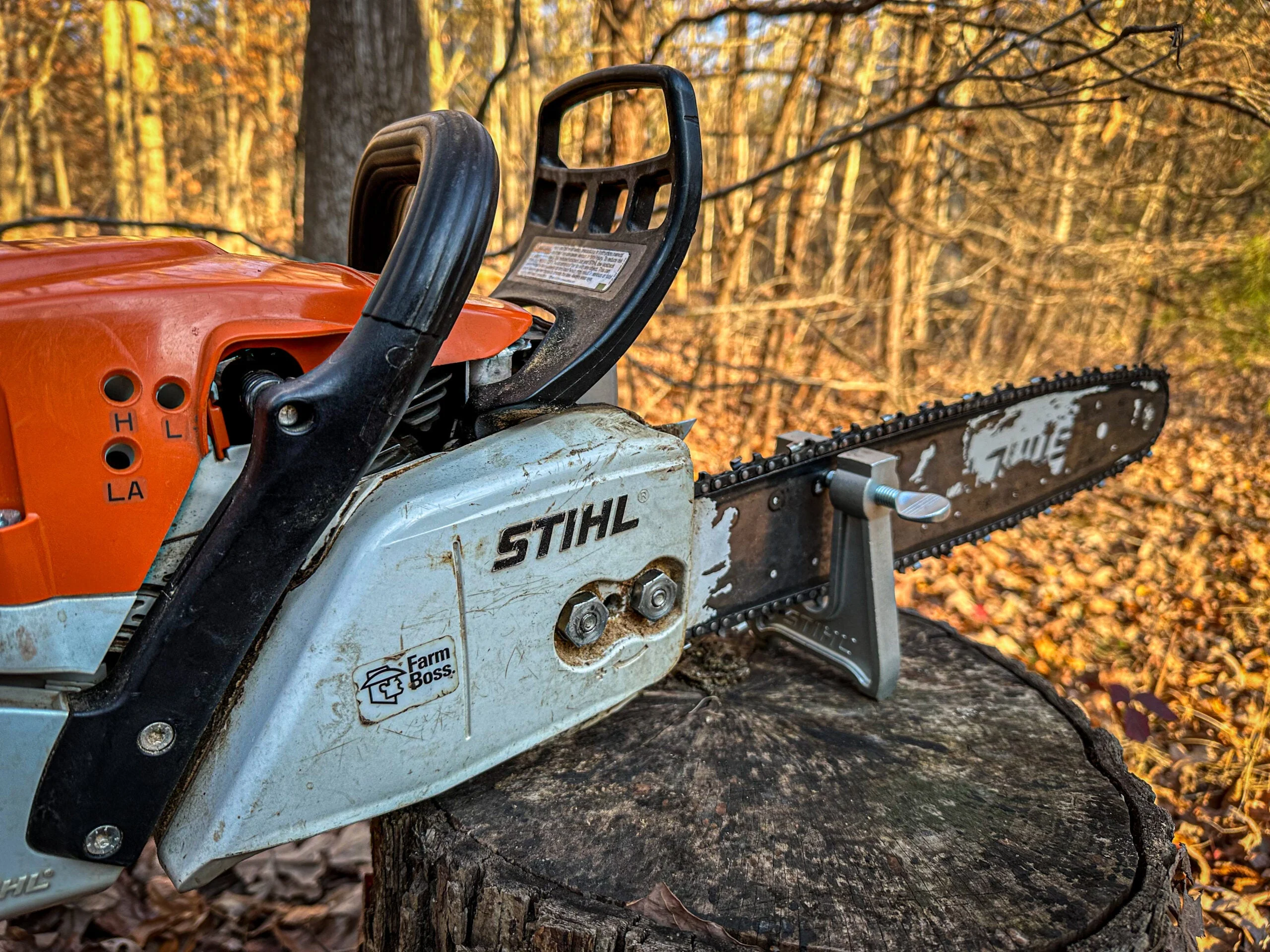
A dull chainsaw is a dangerous chainsaw. Jennifer Caudill
Table of Contents
How to Use a Chainsaw Safely
How to Sharpen a Chainsaw—Step by Step
FAQs
Always Prioritize Safety When Using Chainsaws
Working with chainsaws requires caution and respect for the tool. Always prioritize safety by wearing protective gear and working in a stable, well-lit environment. Many years ago, I took a master logger certification course, and the instructor shared something I will never forget. He said a chainsaw blade travels around a chainsaw at about 75 mph. To avoid a chain kickback, you would have to be able to move away from a flying chainsaw from about 2 feet at that rate of speed, which is impossible. Keeping the chain sharp will help you avoid that. Let’s get started on how to sharpen a chainsaw.
_Learn how to subscribe to the new Field & Stream magazine here!
_
Step-by-Step Tips on How to Sharpen a Chainsaw
1) Safety First
Before you begin the process of how to sharpen a chainsaw, ensure the chainsaw is powered off and the spark plug is disconnected (for gas chainsaws). Wear gloves and safety glasses for protection. When not in use, keep the blade sheath in place. You are creating several razor-blade-sharp teeth on this thing. This ensures it does not cut you or someone else, while en route in your truck, ATV, or tractor or carrying it by hand.
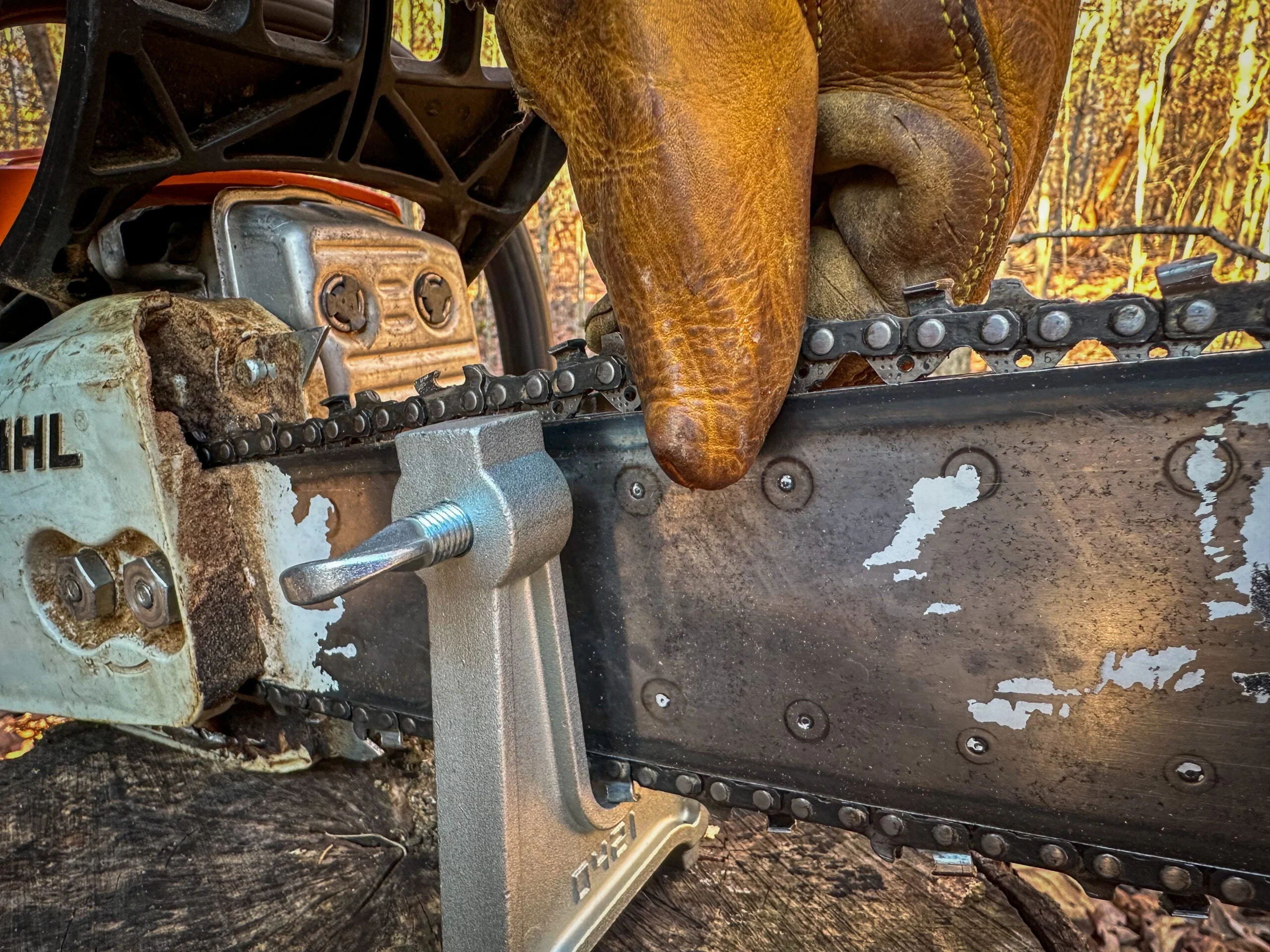
Always wear gloves (and safety glasses) when sharpening a chainsaw. Jennifer Caudill
2) Secure the Chainsaw
Clamp the chainsaw bar in a vise with the chain free to rotate. This stability will help you keep the proper angle when filing the right angle on the teeth. You can tie one down with a rope on a log in the field or a tailgate.
3) Identify the Leading Cutter
Look for the leading cutter (the shortest cutter on the chain), as this will determine the filing angle. Often this cutter will be a different color, with a stamp or similar on it.
4) Choose the Right File
Use a round file that matches the diameter of your chainsaw’s cutters. The file size is usually indicated in the chainsaw’s manual. This is also indicated on the side of the motor housing or the blade on some chainsaws.
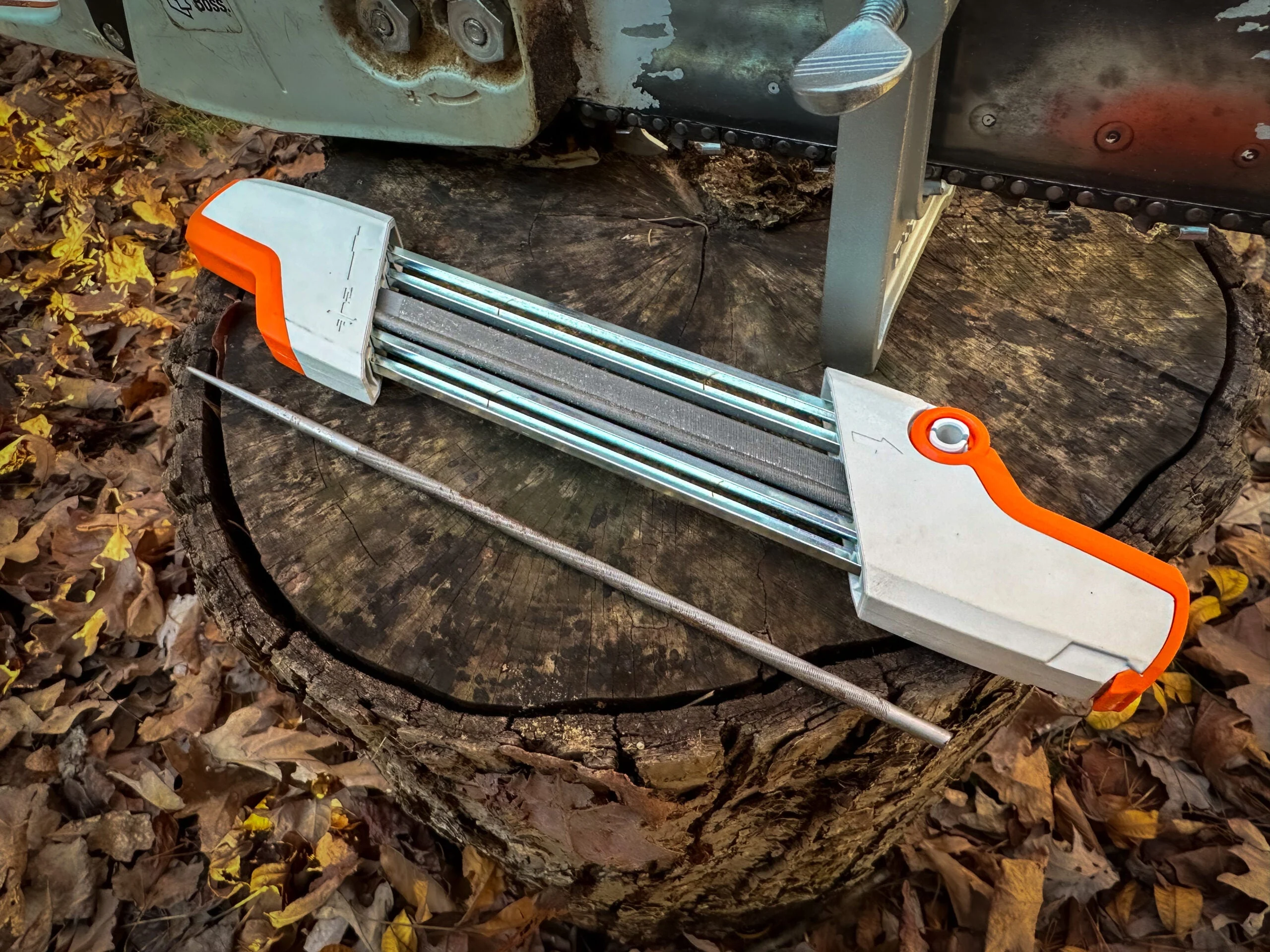
Select a round file that matches the size of your chainsaw’s cutters. Jennifer Caudill
5) Set the Filing Angle
Position the file at the same angle as the cutter’s top plate (usually around 30 degrees). There are filing guides available to help maintain this angle. The filing guides are how I do it. This can quickly be done in the field or the workshop without electrical power. Some Dremel-type tools have sharpening attachments for chainsaws. They work well, but they can quickly remove too much material, which shortens your chain’s lifespan.
6) File the Cutters
File each cutter in the same direction using smooth, even strokes. Count your strokes and apply the same number to each cutter for uniform sharpness. The angle is critical here, so be patient and don’t get in a hurry. Keep in mind that the more patient and thorough you are at sharpening, it will save you a tremendous amount of time and headaches in the field using it.
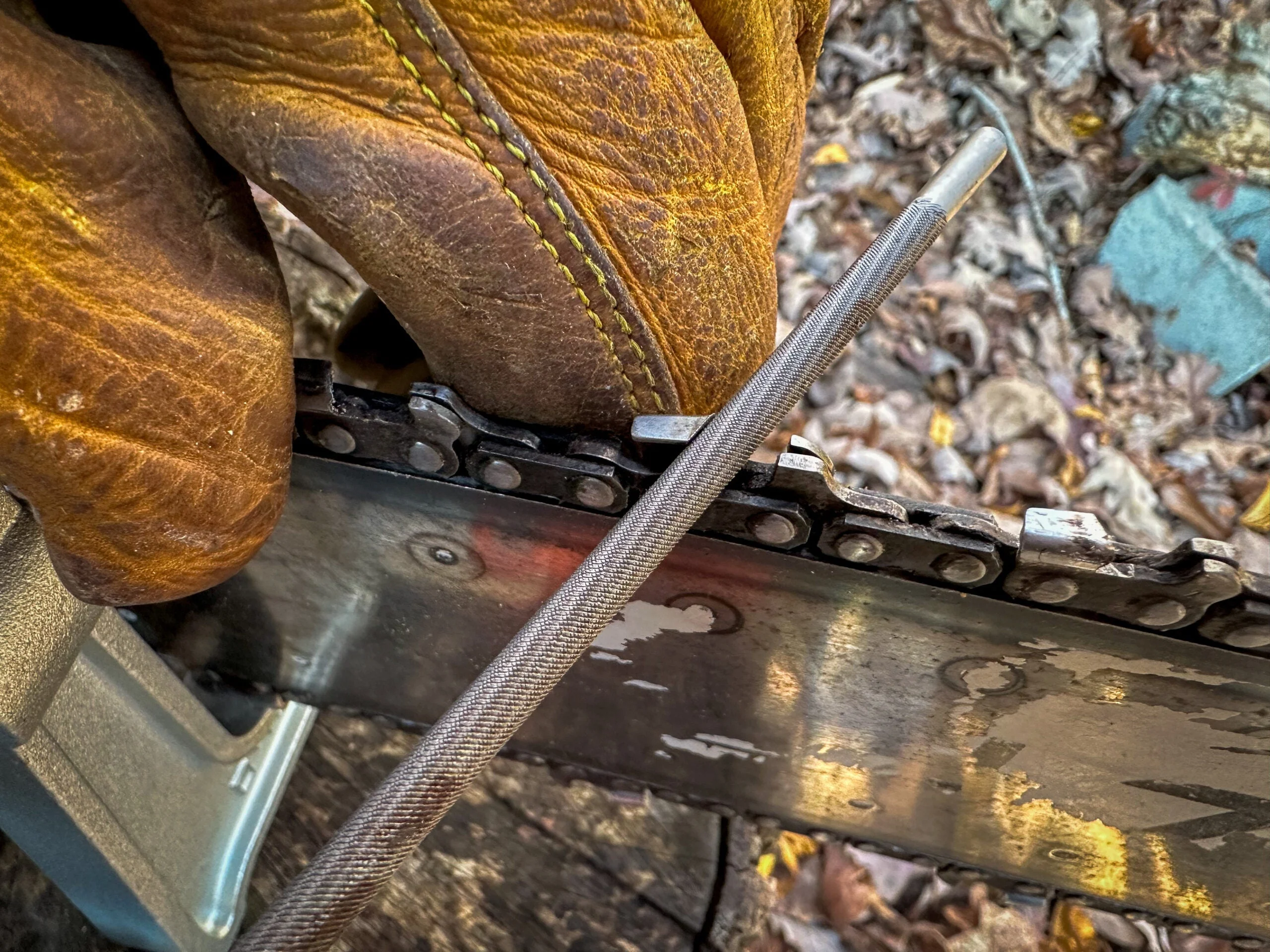
Sharpen the chainsaw in smooth, even strokes with the file. Jennifer Caudill
7) Work in Sequence
Sharpen all the cutters on one side first, then turn the chainsaw around and sharpen the other. You can also change your body positioning to make it more timely.
8) Check the Depth Gauges
Checking these gauges is the most missed part of the process of how to sharpen a chainsaw—and is just as crucial as the cutters. The depth gauges determine the height of the cut. Use a depth-gauge tool and flat file to adjust if they’re too high. As mentioned before, the files that come with guides will also have a depth gauge for this.
9) Clean the Chain
After you’ve sharpened the chainsaw, clean the chain to remove any filings or debris. This is good for the chainsaw and especially good for you and your safety. When you start it up, you don’t want minuscule particles of chainsaw cutter flying about. I use a stiff wire brush to do this easily.
10) Test the Chainsaw
Safely test the chainsaw on some wood to ensure it’s cutting efficiently and smoothly. I also stand the blade off from a piece of wood and run it to make sure it is oiling well. You can see oil coming off the blade’s tip if you point it toward a surface (like a log) to verify this. If your chainsaw is not oiling well, it will get hot and dull quickly due to lacking lubrication.
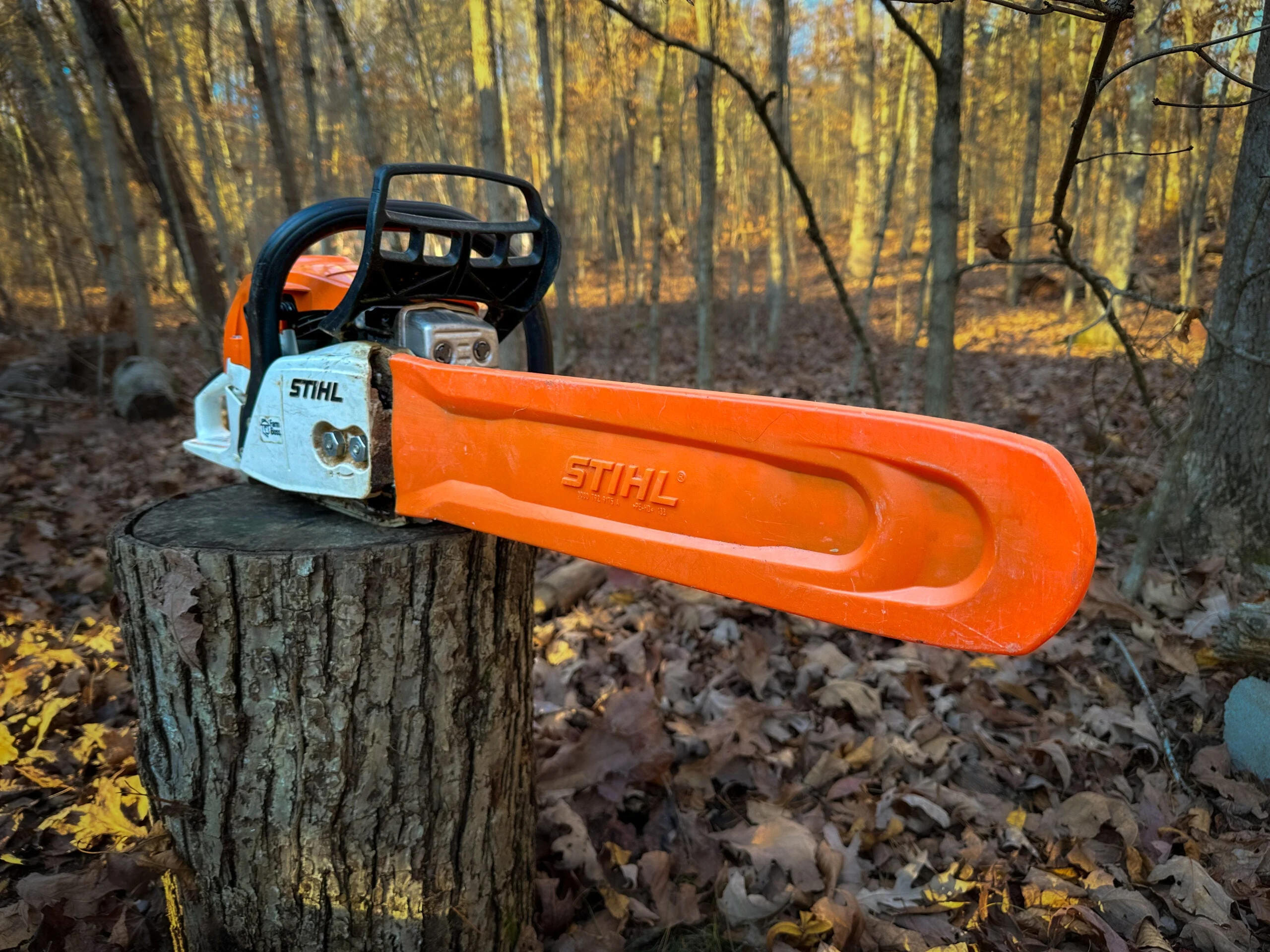
A sharp chainsaw in the perfect tool for heavy-duty tasks in the woods. Jennifer Caudill
FAQs
What’s the best thing to sharpen a chainsaw chain?
The best tool for sharpening a chainsaw chain is a round file with guides that match the cutter’s diameter. It’s essential to use the correct size file, as indicated in the chainsaw’s manual, to ensure effective sharpening.
Are chainsaw chains worth sharpening?
Yes, sharpening chainsaw chains is worth it. Regular sharpening extends the life of the chain, improves cutting efficiency, and maintains the chainsaw’s safety. It’s more cost-effective than frequently buying new chains. If you are new to it, it may feel awkward at first. Like with most things, once you do it enough, it will become second nature to you.
How often should I sharpen my chainsaw?
It would be best to sharpen your chainsaw when you notice it’s not cutting as efficiently as before. This could be after several hours of use or sooner if the chainsaw has hit dirt or rocks. It is also heavily dependent upon the type of wood you are cutting. Regular inspection of the chain’s sharpness is recommended. One indicator is when your cuts start to turn or curve while cutting.
Do you put oil on the chain of the chainsaw?
Yes, it’s essential to oil the chain of the chainsaw. Proper lubrication reduces friction and heat build-up, prolonging the life of the chain and the chainsaw. Most chainsaws have an automatic oiling system, but manual lubrication is also recommended.
How tight should a chainsaw chain be?
A chainsaw chain should be tight enough that it doesn’t sag from the guide bar but loose enough to be pulled around easily by hand. A correctly tensioned chain will snap back into place after being pulled away from the bar. I like to see the bottom of the chain runners inside the guide rail of the blade when I pull it away. If they pull farther than that, I will tighten the chain.
What size file is best for sharpening a chainsaw?
The best file size for sharpening a chainsaw depends on the chain’s pitch. Standard sizes are 5/32 inch, 3/16 inch, and 7/32 inch. Refer to your chainsaw’s manual to determine the correct file size for your specific model.
**Read Next: How to Chose the Right Chainsaw Chaps
**






